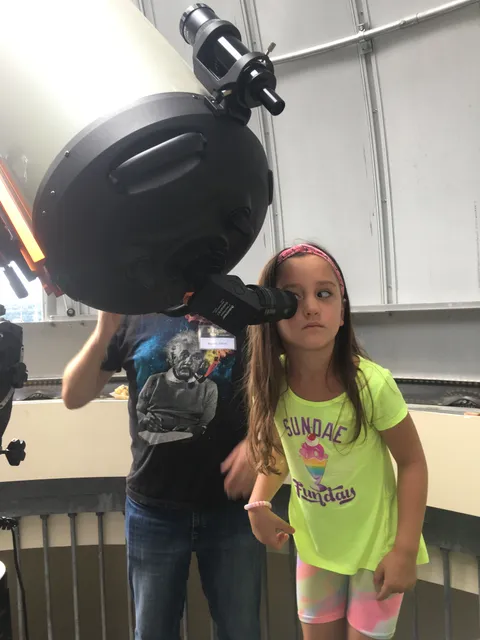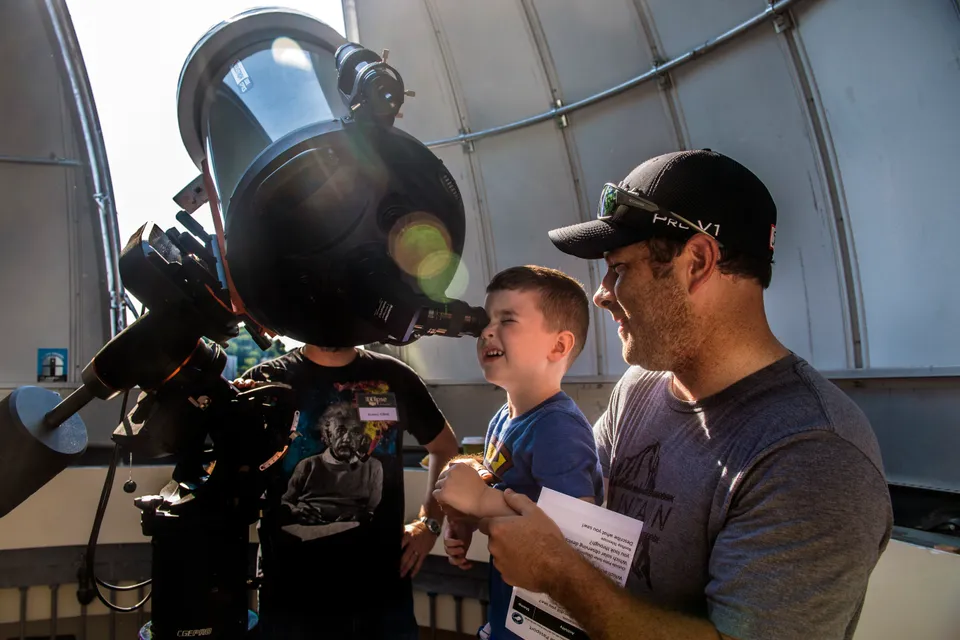When the weather permits it and conditions look favorable, following each of our shows a small team will open the dome of the observatory and point the telescope to different objects, allowing visitors to see the world beyond Earth, with typical observations including Jupiter and Saturn alongside its moons.
The exact specifications of the telescope are provided below, but in summary, it is a 14” diameter Schmidt-Cassegrian telescope with concave lenses. The concave shape of these lenses means that images through the telescope will actually appear upside-down and flipped horizontally. It is motorized and fitted with a sky tracker which allows the telescope to automatically follow a point in the sky without consistent manual input.
The telescope itself is equatorially mounted such that one gear will rotate the telescope around the celestial pole (where stars will seemingly not move across the night sky) and one gear that moves up or down towards or away from Polaris, the North Star. This mounting makes both automatic tracking and manual maneuvering of the telescope easier to see celestial objects, as with this setup only one gear is ever needed at once to automatically follow the motion of the sky as the Earth rotates.
Following each use of the telescope, the dome is shut and caps are placed on the lenses to protect them from potential damage due to weather conditions and to prevent dust or other artifacts to fall on the lenses, decreasing the quality of the images we see through them.
Schmidt-Cassegrian Telescope Specifications
- Latitude: 39° 37’ 58.34’’
- Longitude: 79° 57’ 16.69’’
- Elevation*: 1160 ft (354 m)
- Aperture: 356mm (14”)
- Focal Length: 3910mm (154”)
- Focal Ratio: f/11
- Focal Length of Eyepiece: 1: 23mm (0.91”)
- Limiting Stellar Magnitude: 15.3
- Optical Tube Weight: 46 lbs (21 kg)
*Elevation is the average elevation of the city of Morgantown



